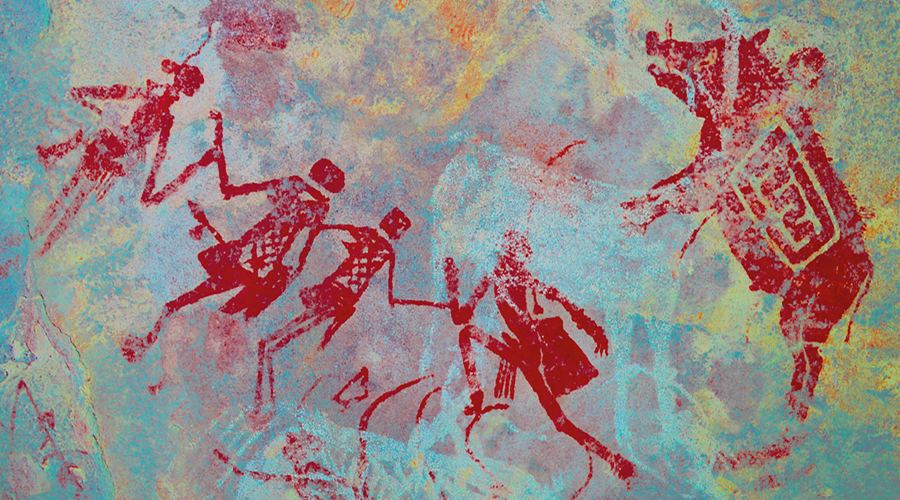



Ten cave paintings found in Mersin a port city on the Mediterranean coast of southern Turkey date to around 8,000 years ago, and offer new insights on the prehistoric period of the region formerly known as Cilicia.
Speaking at a news conference on Friday two archeologists working on the excavation, Professor Murat Durukan of Mersin University and Associate Professor Serdar Girginer of Çukurova University, discussed how the cave art was a continuance of findings of homogeneous ancient rock paintings on the ancient Latmos Mountains in western Turkey. Indicating that the parietal art was confined to Latmos or other places in western and southwestern Turkey.
Speaking to reporters the archeologists stated: "This is the first time cave paintings were discovered in Middle Toros (mountain range) and is significant for the study of the prehistoric period of Cilicia as it shows that the set of faiths prevalent in other parts of Anatolia in a period covering 5,000-6,000 B.C. was also observed in this region.”
Archaeologists say they believe the cave was some kind of shrine from a prehistoric society and the dancing figures are believed to depict rituals marking the start of harvest season, or the onset of spring, or a rites of passage belief system.
Cave paintings found in southern #Turkey date to the #prehistoric era https://t.co/dKLKsMzp47 #archaeology pic.twitter.com/2YpacMGJny
— Bradshaw Foundation (@BradshawFND) September 26, 2016
Discover more rock art from around the World:
Bradshaw Foundation
by Bradshaw Foundation
Monday 30 May 2022
by Bradshaw Foundation
Wednesday 19 January 2022
by Bradshaw Foundation
Thursday 06 January 2022
by Bradshaw Foundation
Monday 06 December 2021
by Bradshaw Foundation
Monday 29 November 2021
by Bradshaw Foundation
Monday 25 October 2021
by Bradshaw Foundation
Monday 12 July 2021
by Bradshaw Foundation
Monday 24 May 2021
by Bradshaw Foundation
Tuesday 20 April 2021
by Bradshaw Foundation
Thursday 01 April 2021
by Bradshaw Foundation
Tuesday 23 February 2021
by Bradshaw Foundation
Thursday 14 January 2021
by Bradshaw Foundation
Friday 18 December 2020
by Bradshaw Foundation
Sunday 06 December 2020
by Bradshaw Foundation
Thursday 26 November 2020
by Bradshaw Foundation
Wednesday 07 October 2020
by Bradshaw Foundation
Monday 30 May 2022
by Bradshaw Foundation
Wednesday 19 January 2022
by Bradshaw Foundation
Thursday 06 January 2022
by Bradshaw Foundation
Monday 06 December 2021
by Bradshaw Foundation
Monday 29 November 2021
by Bradshaw Foundation
Monday 25 October 2021
by Bradshaw Foundation
Monday 12 July 2021
by Bradshaw Foundation
Monday 24 May 2021
by Bradshaw Foundation
Tuesday 20 April 2021
by Bradshaw Foundation
Thursday 01 April 2021
by Bradshaw Foundation
Tuesday 23 February 2021
by Bradshaw Foundation
Thursday 14 January 2021
by Bradshaw Foundation
Friday 18 December 2020
by Bradshaw Foundation
Sunday 06 December 2020
by Bradshaw Foundation
Thursday 26 November 2020
by Bradshaw Foundation
Wednesday 07 October 2020
Friend of the Foundation











